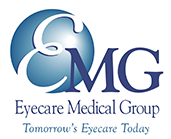
Glaucoma is one of the leading causes of blindness in adults over 60. Despite being a well-known eye condition, it often goes unnoticed because it doesn’t present symptoms in the early stages.
The first symptom associated with glaucoma is gradual vision loss, and once you lose vision to glaucoma, it’s irreversible. If you’ve ever heard glaucoma referred to as the silent thief of sight, this is why.
So how do you make sure the silent thief doesn’t sneak up on you? The most important thing is awareness, which is why January is Glaucoma Awareness Month.
You should know what glaucoma is and what your risk is. It will be easier to determine how frequently to have eye exams based on that risk. If you get diagnosed with glaucoma, you’ll be able to treat it faster. Keep reading to find out more about Glaucoma Awareness Month.
What is Glaucoma?
Glaucoma is the name given to various eye diseases that cause damage to the optic nerve. Glaucoma is almost always caused by high intraocular pressure or IOP.
The fluid that flows through your eye can become blocked off, and the pressure that builds puts a strain on the optic nerve. When the pressure is too high, the optic nerve can become damaged.
The optic nerve sends the information about what you see to your brain, so when it becomes damaged, parts of your vision will become blurry or go dark, starting with your peripheral vision.
This occurs when open-angle glaucoma develops, the most common form of glaucoma. It happens when the primary drainage angle between your cornea and iris is open, but the porous tissue around your eye where fluid passes through, the trabecular meshwork, is blocked.
Pressure builds slowly over time, and you won’t notice it unless you get your IOP measured. Angle-closure glaucoma is rarer and presents obvious symptoms, including headache, nausea, blurry vision, halos, and rapid loss of sight.
It usually happens suddenly when the iris bulges and cuts off the drainage angle between it and the cornea. Angle-closure glaucoma is considered a medical emergency and requires immediate attention.
Open-angle glaucoma, however, is the silent thief of eyesight. It’s far more common, and the only way to find out you have it early and prevent total vision loss is by knowing your risk and having regular eye exams.
Recognize Your Risk
Risk factors for glaucoma include:
- Being over 60
- Being of African, Latinx, or Asian descent
- Having a family history of glaucoma
- Having diabetes
- Being extremely nearsighted
If you exhibit multiple risk factors, you should be aware and talk to your eye doctor about what you can do to lower your risk for vision loss. The best way to do this is by scheduling regular eye exams.
See an Eye Doctor Regularly
By the time you’re 60, you should be seeing an eye doctor at least once a year. By the time you reach 40, you should be seeing an eye doctor at least once every two years.
But if you’re at higher risk for glaucoma due to the factors listed above, you may need to have more frequent eye exams, as recommended by your eye doctor.
Your ophthalmologist can check your optic nerve for damage and measure your IOP during your eye exam. If they find there’s no damage yet, but your IOP is high, they may recommend medication to lower it.
They may also recommend medication to prevent further damage from occurring. Different surgical treatments can also lower your IOP.
There is no cure for glaucoma, but early intervention can prevent further optic nerve damage and preserve your vision. The earlier you have glaucoma diagnosed, the sooner you can start a comprehensive treatment plan to manage the disease and slow its progress.
Concerned about glaucoma? Schedule an appointment at Eyecare Medical Group in Portland, ME, to keep your eyes healthy!





